Why eCommerce Ad Platforms Matter Today
Impact on Sales and Brand Growth
Digital ad platforms are no longer side channels. They’re the main stage. The first click, the first impression, the first conversion—all of it often starts with an ad. Whether it's a promoted product on Google or a short video on TikTok, these platforms funnel traffic where intent lives and scrolls happen fast.
Sales spike when brands master ad placement, targeting, and messaging. But beyond numbers, it’s about brand visibility. Every well-placed ad becomes a visual handshake. Consistent, sharp imagery backed by smart retouching can turn cold clicks into warm buyers. This is where speed and quality in photo production matter, especially with partner solutions like Pixofix pumping out studio-grade visuals at scale, without losing that custom touch.
Importance for Fashion and eCommerce Brands
Fashion lives and dies by the scroll. For eCommerce fashion brands, ad platforms aren’t just media—they're runways. Each ad slot is a chance to show fit, feel, and story in one glance. That’s why visuals can’t lag. They need to strike fast, stay on-brand, and look like someone cared.
Fashion feeds are saturated. Brands that win use refined visuals edited with precision and intent—not over-styled, but sharp and true-to-life. Tools like Pixofix help brands keep their product imagery consistent, shop-worthy, and retouched for emotional impact while still moving fast enough to keep up with trend cycles.
Understanding eCommerce Advertising
Definition and Core Objectives
Ecommerce advertising means strategically placing paid content to drive product discovery, intent, and purchase. But it’s not just about visibility. Clean execution matters—visuals, placement, timing, and messaging all stack up.
The core goal? Relevance and return. Ads should reach the right group, with a product that matches their moment of need. Behind the scenes, this means seamless creative production, optimized listings, and retouchers who understand how visuals carry the brand promise.
Difference Between Organic and Paid Ads
Organic content builds slowly. Think SEO, social posts, referrals—valuable but uncertain. Paid ads, on the other hand, buy momentum. They guarantee eyeballs. You decide the audience, budget, and timeline. But creative quality becomes even more critical. With everyone shouting, the visuals need to whisper the loudest.
In paid placements, there's little room for amateur visuals. AI-generated content might help fill the gaps, but the best-performing ads still combine human craft with automation. Brands that blend handcrafted looks from teams like Pixofix with fast production workflows gain the edge.
Key Types of eCommerce Ad Platforms
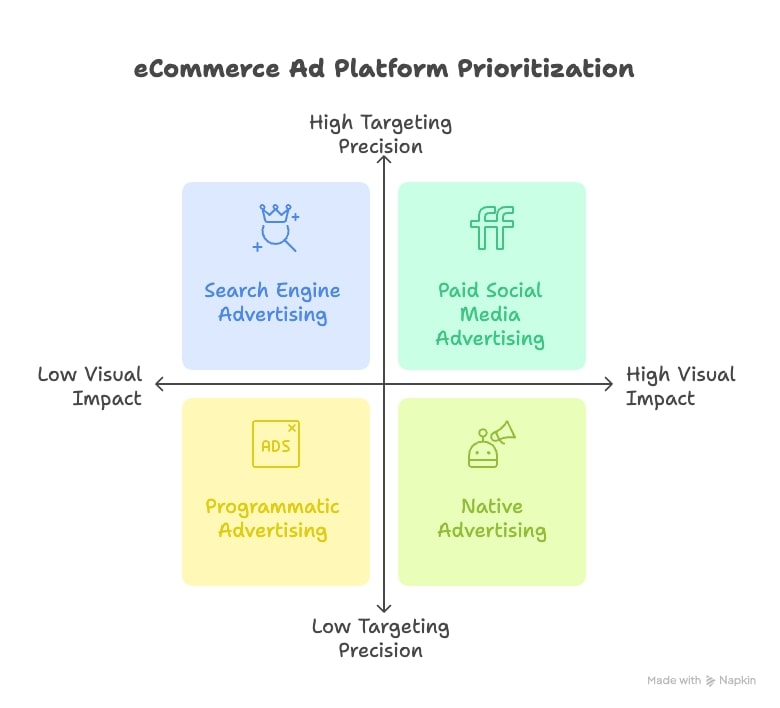
Paid Social Media Advertising
Facebook, Instagram, TikTok, Pinterest—these aren't just social hangouts. They’re discovery engines. Ads on these platforms push awareness and sales with feed-friendly formats. The twist? Visuals run everything. Your CPM drops if your creatives stick. Poorly lit product shots or mismatched tones? That’s how scrolls skip you.
Fashion brands especially thrive here, where aspirational styling and vibe-forward visuals matter. Want the ad to feel native? You’ll need more than trendy filters. You’ll need design fluency. This is where visual partners like Pixofix step in, ensuring every image or video sits naturally inside fast-scrolling feeds.
Search Engine Advertising
Google Ads and Bing remain core for commercial intent. Shoppers here are typing with purpose—specific needs, branded queries, product names. This makes targeting powerful, but visuals still play a huge role, especially in Shopping ads.
Clean product imagery, optimized metadata, and fast-loading pages are just the baseline. The real difference comes when listings consistently show up polished and branded. Half-baked product thumbnails or inconsistent styles won’t earn the click. You need ads that feel premium before the customer even visits the product page.
Programmatic Advertising
Programmatic lets you automate media buying with real-time data and precise targeting. It’s smart, fast, and scalable—but often bland if the creative gets neglected. Too many brands rely on cookie-cutter banners that fade into the background.
Visual storytelling gets sacrificed when production bottlenecks slow things down. That’s where integrated partners like Pixofix support performance marketers—delivering ready-to-deploy creatives at scale, aligned to campaign needs and always on-brand.
Native Advertising
Native ads blend into the surrounding content, making them feel natural, not forced. Think shoppable blog integrations, editorial-style product placements, and featured content pieces. The goal is context alignment—ads that inform rather than interrupt.
For eCommerce, especially in lifestyle and fashion, this style works well. But alignment only works when creative tone matches the environment. That includes lighting, color, composition, and cropping. A raw studio shot dropped into a design editorial breaks the flow. Subtle retouching designed for environment compatibility becomes essential.
Best eCommerce Ad Platforms

Google Ads
Key Features and Benefits
Google Ads means high-intent shopping. From standard search to Shopping tab placements, you're catching people typing exactly what they want. Product ads show images, price, rating—all upfront. But that only works if your image quality supports conversion.
Google Ads also offers rich targeting layers: keywords, location, device types, and audience signals. Combined with strong product visuals and consistent branding, this becomes a conversion machine.
Best Practices for Optimization
- Keep product feeds updated daily.
- Use high-res, clipping-free images.
- Test images with and without props.
- Make sure backgrounds are consistent—Pixofix helps flag and fix minor inconsistencies that kill trust.
And monitor performance by product, not campaign. Images that underperform often need rethinking, not rewriting.

Facebook and Instagram Ads
Audience Targeting Techniques
With Meta Ads Manager, the real power lies in targeting. You can segment by interests, behaviors, locations, even engagement type. Lookalike audiences? Still gold. But retargeting site visitors with visuals they’ve already seen (refreshed with seasonal tones) gets the best ROI.
Dynamic product ads do the heavy lifting here. But sloppy photos drop your CTR. Use consistent retouching to give every product a fair shot.
Creative Strategies for Fashion Brands
Show lifestyle first, product second. Your ad isn't a catalog—it's a hook. Lean into campaigns that mix motion, editorial poses, and user-generated authenticity. For fashion, clean backdrops still work, but the styling must feel personal. Stitch that with Pixofix-level consistency in cropping, tone, and shape, and you’ve got scroll-stopping visuals.

TikTok Ads
Content Creation Tips
TikTok's rulebook? Story first, polish second. Short videos need to feel spontaneous—but still sharp. That’s the edge. Don't overproduce. Showcase movement, texture, and visual context. Think how the fabric dances, not just how it fits.
Use native editing tools or layer on fast retouching workflows as needed. The trick? Save the polish for post-production while keeping the shoot raw and reactive.
Understanding the Algorithm
TikTok rewards watch time and relevance. That means visuals must carry from the first frame. Weak lighting or lazy styling tanks performance. Hook early, then explain. Retouched product overlays, clean motion graphics, and branded subtitles can keep everything aligned without losing native energy.
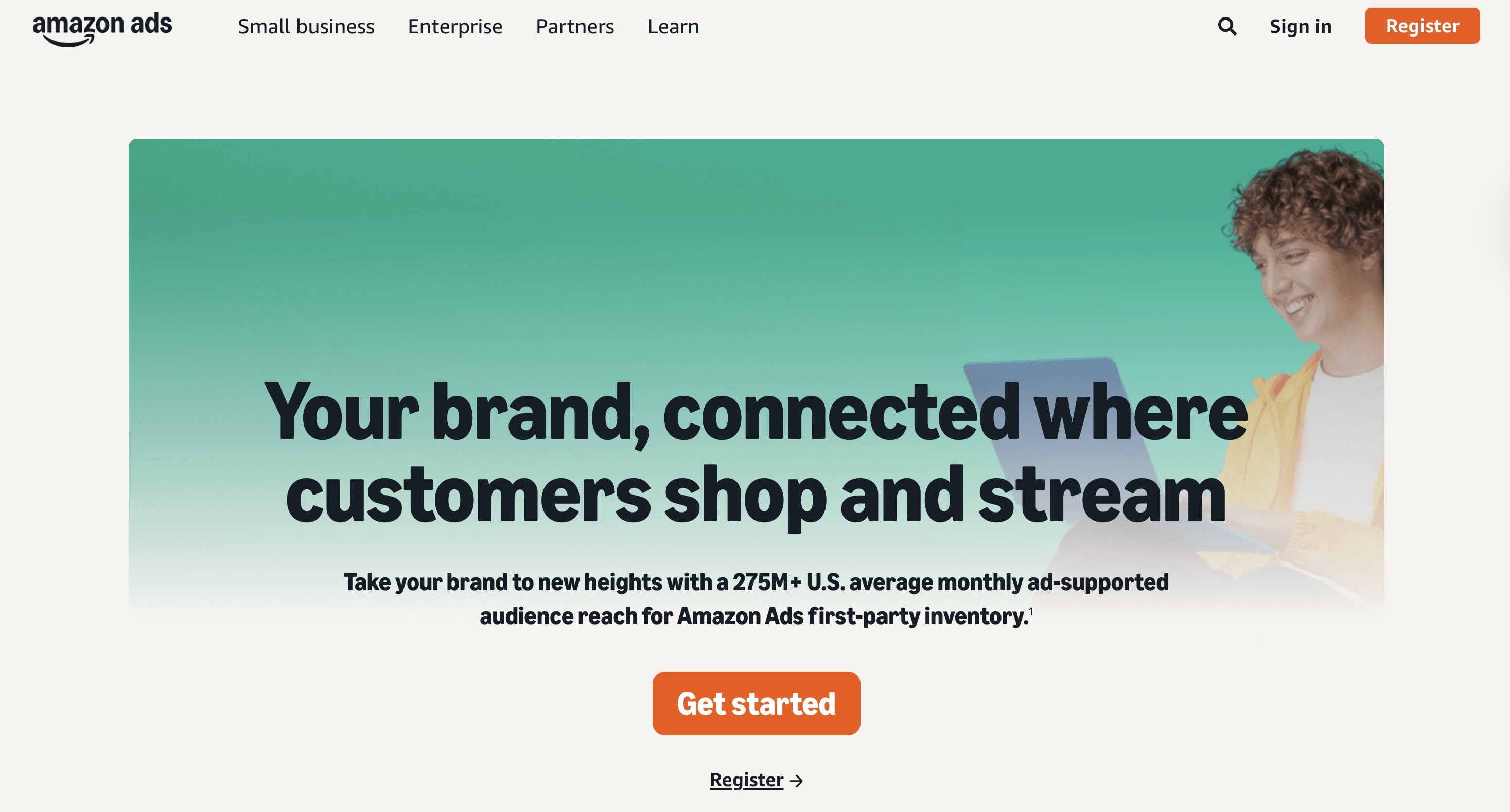
Amazon Ads
Product Listing Optimization
Amazon is ruthless—ranking, visibility, and conversions all depend on how you present products. From titles to backend keywords, there’s room to play. But ultimately, the hero image is king.
Crisp lighting, flawless shadows, clean cutouts. Listings rise and fall based on clarity. A slightly too-dark product photo can sink your CTR overnight. Brands work with Pixofix to bake in consistency across colorways, sizes, and bulk uploads so every SKU shines equally.
Strategies for Boosting Visibility
- Test A+ Content layouts.
- Refresh imagery seasonally without rewriting copy.
- Sync ad campaigns with restocks and new variant drops.
- Use ads to boost underperforming inventory during slower seasons.
The better your product looks in an ad, the fewer clicks you need to convert.
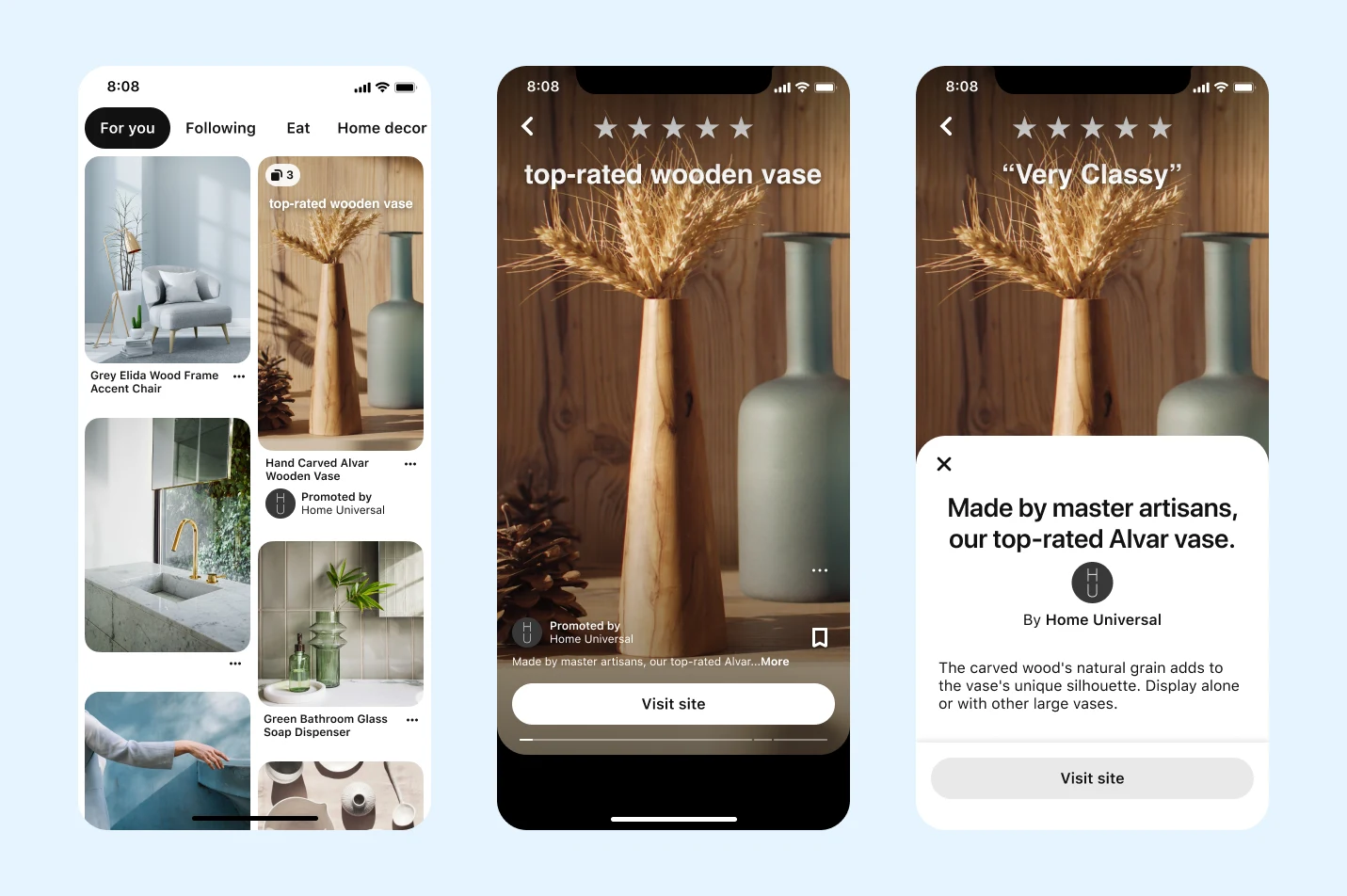
Pinterest Ads
Engaging Visuals for Higher Conversions
Pinterest thrives on intent-driven discovery. It’s part inspiration board, part shopping funnel. But unlike other platforms, aesthetic alignment has outsized weight. Your visuals need to feel aspirational, not salesy.
Focus on vertical formats, natural lighting, and emotionally resonant setups. Wardrobe shots, color-matched props, complementary textures—all play into the conversion journey. Here, Pixofix helps elevate visual consistency across pinboards while preserving the handmade feel.
Case Studies of Successful Campaigns
Fashion brands that built seasonal boards showcasing shoppable outfits saw massive gains in saves and clicks. Others ran “style it your way” series using dynamic product pins edited in different contexts—studio, street, mirror-shot. Visually coherent campaigns perform best when assets feel like part of a living ecosystem, not batch uploads.
Building Effective Ad Campaigns
Crafting Engaging Ad Content
Ad content isn’t about saying more. It’s about showing better. One standout image or 5-second video matters more than 200 words of copy. Shoot for emotion, urgency, or vibe—but always think about what the viewer feels right when they see it.
Lean on visual storytelling. That necklace shot? Show it catching light during golden hour. That sneaker? Shoot mid-stride. And when it comes to finish, a team like Pixofix ensures every shadow, highlight, and edge feels intentional.
Segmenting Your Audience for Targeted Ads
One ad doesn't fit all. Break your audience down—by age, style, behavior, device. Then serve visuals that match their world. A 22-year-old scrolling on TikTok at 11 p.m. doesn’t shop like a 40-year-old browsing Pinterest on a weekend.
Update visuals and formatting for each segment. Portrait crop for mobile, high-contrast colors for night scrollers, neutral palettes for digital minimalists. With a visual production partner dialed into your brand style, versioning gets easier without sacrificing quality.
Setting Goals and Budgets
Start small, but with purpose. Pick one product, one goal, one visual direction. Set your daily budgets tight, test often, and track what’s working. Don’t throw money at underperforming styles or formats. Fix the visuals first.
Good ad budgets are spent where the brand feels the most alive. When a polished thumbnail leads to a story-strong PDP, trust builds. And sales follow.## Metrics to Measure Campaign Success
Return on Ad Spend (ROAS)
ROAS is the north star for ad efficiency. It tells you how much you earned for every dollar spent. If you spent $500 and made $2,000, your ROAS is 4x. But raw numbers don’t tell the full story unless visuals are doing their job. Poor retouching or inconsistent imagery can kill purchase intent, no matter how good the targeting.
ROAS should be tracked per ad type and per product. A flashy lifestyle video might drive strong engagement but close fewer high-value sales. On the flip side, a clean, scroll-stopping still with expert retouching—like those crafted by Pixofix—might anchor a Shopping ad with better yield.
Customer Acquisition Cost (CAC)
CAC reveals how much it takes (in ad spend) to acquire one customer. Low CAC means you’re reaching and converting effectively. It also points to a tight creative strategy—messaging, targeting, and visuals all in sync.
If your CAC starts creeping up, audit your creative first. Are product visuals punchy? Do they lead with clarity? Are retouched images aligned with the customer's expectations? Small visual fixes can cut CAC dramatically without jumping platforms or tweaking audiences.
Click-Through Rate (CTR) and Conversion Rate
CTR tells you if your ad earns interest. Conversion rate tells you if interest turns into action. They depend almost entirely on the synergy between message and image.
High CTR with low conversion? Your visuals probably overpromise. Low CTR with strong conversion? The creative may be too subtle to hook. Track both, then test visuals aggressively. Even small tweaks—a brighter background, a clearer texture, a crop that better shows fit—can tip the scale. That's where teams like Pixofix become strategic, not just aesthetic.
Common eCommerce Ad Mistakes to Avoid
Ignoring Audience Research
Running ads without audience clarity is like designing for a ghost. If you don’t know who you’re speaking to, your visuals won’t resonate. Style, tone, and even crop ratios shift depending on who's buying. A Gen Z buyer expects attitude. An older shopper wants clarity and trust.
Brands skip this step chasing trends, but tight audience data informs everything from lighting choices to model selection. It’s foundational, and without it, ROI suffers.
Poor Ad Creative Choices
Bad creative is more than low-res images or clunky layouts. It’s mismatched energy. That means lifestyle photos that don’t feel aspirational, low-contrast thumbnails that disappear in dark mode, or props that confuse rather than complement.
Consistency in visuals matters—but so does intent. Tools can’t fix creative misfires. This is why working with photo production partners like Pixofix makes a difference—they help translate your brand story into ad-ready imagery that actually performs.
Not A/B Testing Campaigns
Skipping A/B testing is like setting your GPS and refusing to recalculate. What works on TikTok might fail miserably on Pinterest. Even within platforms, one background color or crop can outperform the other by miles.
Test image styles—editorial vs. studio, tight crops vs. wide lifestyle. Test pacing, motion, and even product variants. Visuals influence split performance more than most marketers think. Test fast. Learn faster.
Best Practices for Ad Optimization
Retargeting Techniques
Most shoppers don’t convert on first click. Retargeting brings them back. But don’t just recycle the same visuals. Refresh the setting, adjust the color tone, or show the product styled differently. The second look should feel new, not repetitive.
Retargeting works best when the imagery evolves. Start with broad appeal, then retarget with detail—the stitched hem, the texture in motion, the use case. Automation helps distribute assets, but the creative layers need strategy. That’s where systems built with Pixofix-level quality keep your retargeting content sharp and relevant.
Using Analytics for Data-Driven Decisions
Analytics isn’t just for budgets. It’s your visual feedback loop. Break down performance by variant. Are close-ups winning on social? Is product flat-lay driving more add-to-carts than lifestyle in Shopping ads?
Use this data to shape future photo shoots and creative decisions. If a specific crop or light direction lags, swap it out in real time. Visual agility backed by analytics is how brands keep pace without burning creative budgets. Aligning retouching and asset creation with performance stats makes iteration smarter.
Leveraging Customer Feedback
Customers often say what your analytics can’t. “Didn’t match the photo.” “Color felt different IRL.” These aren't just reviews—they're roadmaps to better visual storytelling.
Use feedback to revise retouching guidelines, model casting, or environmental context. Brands that pull insights from post-purchase surveys or return data can design better ads from product angles to lighting style. And with responsive visual partners like Pixofix in the loop, those changes actually become testable assets instead of backlogged ideas.
Visual Workflow: eCommerce Ad Creation Process
Steps from Concept to Launch
Effective ad creation starts before anyone picks up a camera.
- Define the campaign message. What’s the product’s emotional hook?
- Sketch the visual language—colors, props, styles.
- Plan image specs based on platform. Vertical for Stories, tight squares for Shopping feeds.
- Execute the shoot, either in-house or via studio partners.
- Retouch for context. Not too glossy, not too raw. Match the brand tone.
- Build out versions fast—motion cutdowns, cropped variants, color swaps.
That middle step—retouching—isn’t a fix-it phase. It’s part of the storytelling. Partners like Pixofix slot into this pipeline to add speed without compromising nuance.
Checklist for Creating High-Impact Ads
To avoid weak visuals slipping through, build a repeatable checklist:
- Is the product clearly visible and accurately colored?
- Does the image feel on-brand in style and tone?
- Has it been retouched consistently with your other assets?
- Will it blend seamlessly into the target platform’s native feed?
- Is there a version optimized for each ad format (square, vertical, landscape)?
- Have you tested lighting or styling alternatives?
Great ads aren’t lucky. They’re built with systems that make high-quality visuals the default—not the exception.




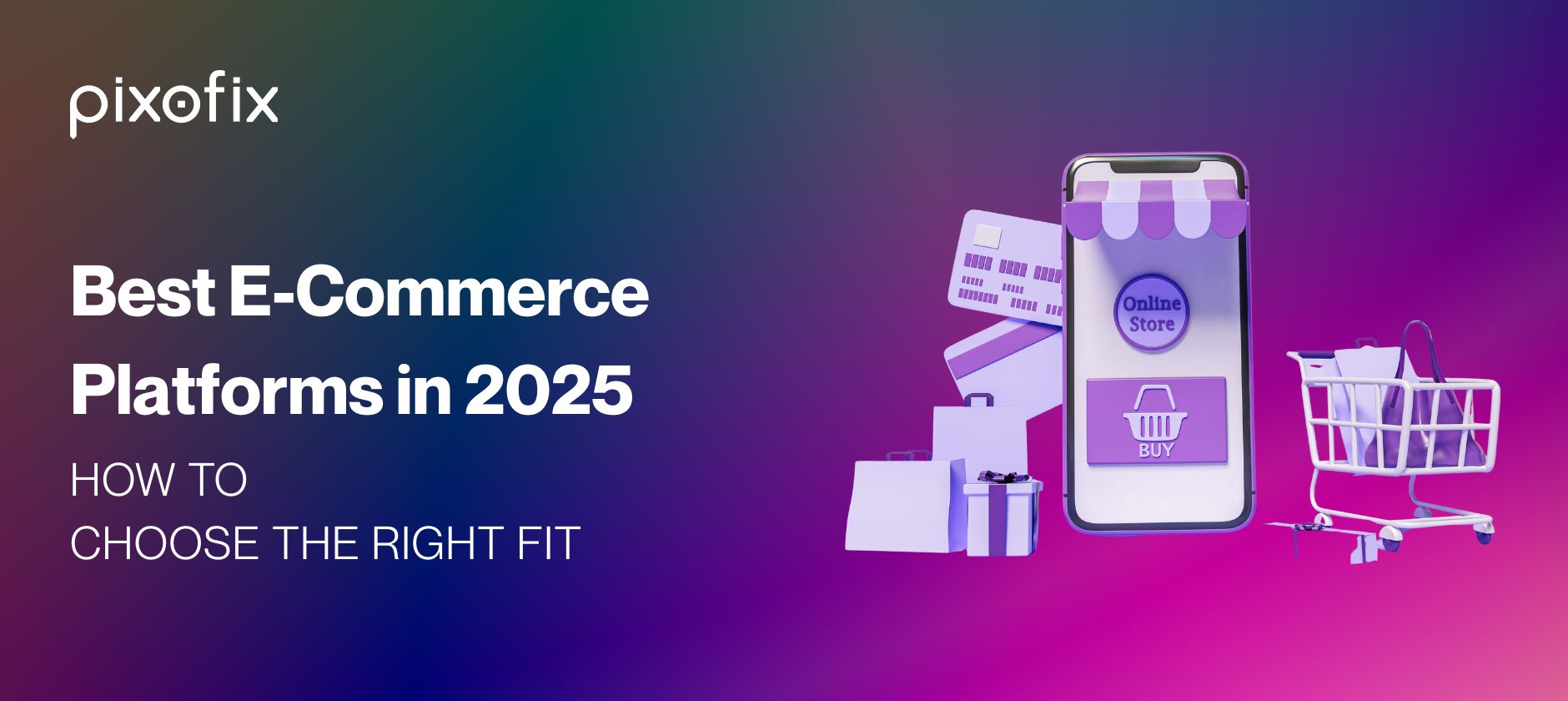
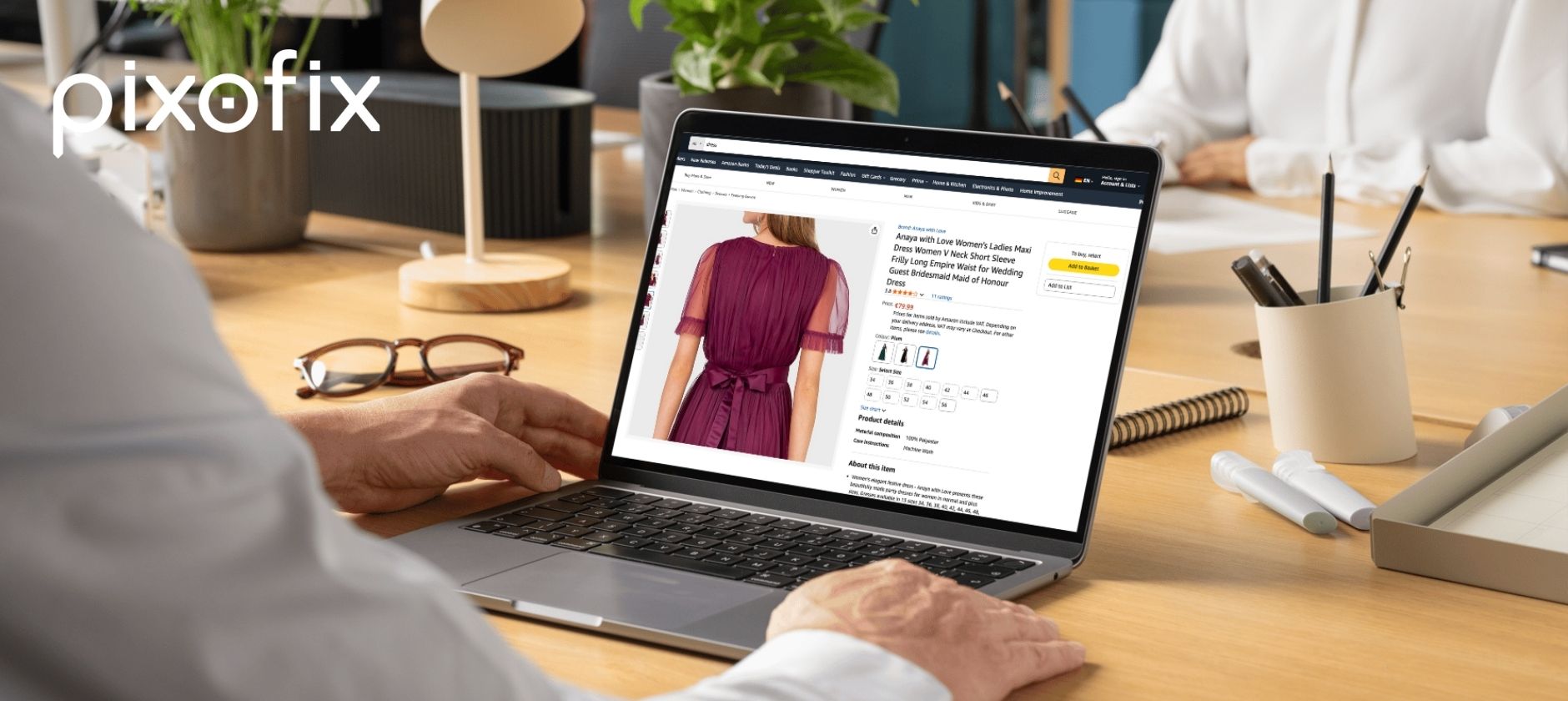
.png)

.png)
